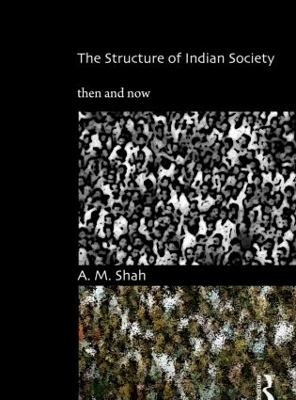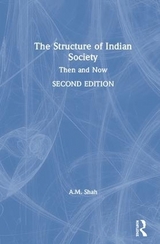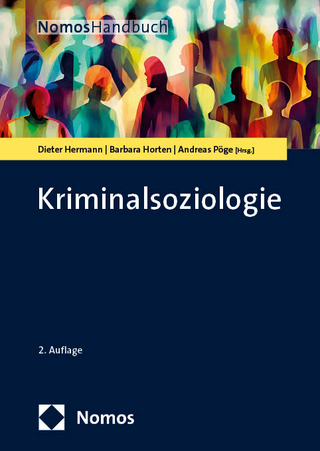
The Structure of Indian Society
Then and Now
Seiten
2010
Routledge India (Verlag)
978-0-415-58622-1 (ISBN)
Routledge India (Verlag)
978-0-415-58622-1 (ISBN)
- Titel erscheint in neuer Auflage
- Artikel merken
Zu diesem Artikel existiert eine Nachauflage
This book provides a critical understanding of various enduring groups, institutions and processes prevailing in Indian society such as caste, tribe, kinship, marriage, religion and rural/urban community, in past and present, based on a wealth of field and archival material.
This book has a collection of ten articles written during 1982–2007 and an exhaustive introduction on the structural features of Indian society, that is, the enduring social groups, institutions and processes, such as caste, tribe, sect, rural-urban relations, etc. The book views Indian society in contemporary as well as historical perspective, based on a wealth of field research as well as archival material.
The book focuses on the significance of village studies in transforming the understanding of Indian society and also shows how urban centres have been useful in shaping society. Taking a critical look at the prevailing thinking on various structures and institutions, the author uses insights derived from his comprehensive studies of kinship, marriage, religion, and grassroots politics in advancing their studies. He points out the strengths and weaknesses of these structures and institutions and the direction in which they are changing with respect to modern time.
As against the overwhelming emphasis on the hierarchical dimension of caste, this book focuses on its horizontal dimension, that is, every caste’s population spread over villages and towns in an area, its internal organization and differentiation based on networks of kinship, marriage, patron-client relationship, and role of endogamy versus hypergamy in maintaining its boundaries. The tribes are also seen in the same perspective, emphasizing the tribe-caste homology.
Finally, the book provides information on important issues like policy of reservations, the reliability of censuses and surveys of castes and tribes, removal of untouchability, growth of organized religion and secularization.
This book has a collection of ten articles written during 1982–2007 and an exhaustive introduction on the structural features of Indian society, that is, the enduring social groups, institutions and processes, such as caste, tribe, sect, rural-urban relations, etc. The book views Indian society in contemporary as well as historical perspective, based on a wealth of field research as well as archival material.
The book focuses on the significance of village studies in transforming the understanding of Indian society and also shows how urban centres have been useful in shaping society. Taking a critical look at the prevailing thinking on various structures and institutions, the author uses insights derived from his comprehensive studies of kinship, marriage, religion, and grassroots politics in advancing their studies. He points out the strengths and weaknesses of these structures and institutions and the direction in which they are changing with respect to modern time.
As against the overwhelming emphasis on the hierarchical dimension of caste, this book focuses on its horizontal dimension, that is, every caste’s population spread over villages and towns in an area, its internal organization and differentiation based on networks of kinship, marriage, patron-client relationship, and role of endogamy versus hypergamy in maintaining its boundaries. The tribes are also seen in the same perspective, emphasizing the tribe-caste homology.
Finally, the book provides information on important issues like policy of reservations, the reliability of censuses and surveys of castes and tribes, removal of untouchability, growth of organized religion and secularization.
A.M. Shah was formerly Professor of Sociology at the University of Delhi.
Introduction 1. Caste in the 21st Century: From System to Elements 2. Purity, Impurity, Untouchability: Then and Now 3. Sanskritization Revisited 4. Sects and Hindu Social Structure 5. The Rural-Urban Networks in India 6. The 'Dalit' Category and Its Differentiation 7. Can the Caste Census be Reliable? 8. Division and Hierarchy: An Overview of Caste in Gujarat 9. Untouchability, the Untouchables, and Social Change in Gujarat 10. Tribes -- So Called -- of Gujarat: In the Perspective of Time. Bibliography. About the Author. Index
| Erscheint lt. Verlag | 28.7.2010 |
|---|---|
| Verlagsort | London |
| Sprache | englisch |
| Maße | 138 x 216 mm |
| Gewicht | 630 g |
| Themenwelt | Sozialwissenschaften ► Soziologie ► Spezielle Soziologien |
| ISBN-10 | 0-415-58622-4 / 0415586224 |
| ISBN-13 | 978-0-415-58622-1 / 9780415586221 |
| Zustand | Neuware |
| Haben Sie eine Frage zum Produkt? |
Mehr entdecken
aus dem Bereich
aus dem Bereich
eine Einführung
Buch | Softcover (2024)
De Gruyter Oldenbourg (Verlag)
CHF 41,90



